Understanding Carat Size in Diamonds: Insights & Tips
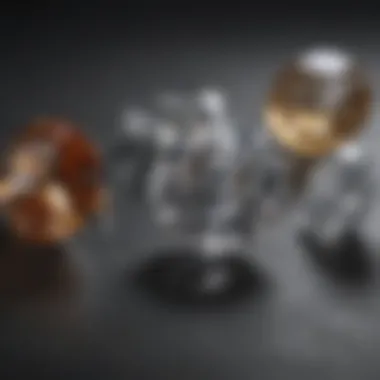
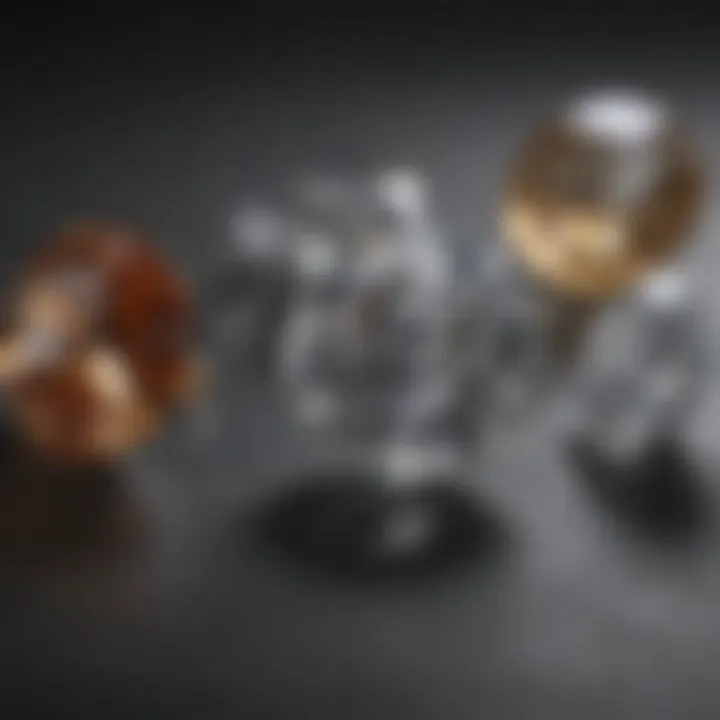
Intro
The allure of diamonds has captivated humans for centuries. Among the various factors that define a diamond, carat size is perhaps one of the most discussed. Understanding the implications of carat size goes beyond mere measurement; it encompasses aspects of value, appearance, and consumer choice. This article aims to delve into these intricacies.
Diamonds are evaluated on more than just their weight; carat size directly influences how a diamond appears and its overall market value. The perception of size can often be misleading, as multiple factors contribute to visual size. Misconceptions abound about what a carat actually represents, leading to confusion among both novice buyers and enthusiasts alike. In this guide, we will clarify these misunderstandings and explore practical approaches to selecting the right diamond based on desired carat size.
Through this exploration, readers will gain insights that empower them to make informed decisions when purchasing diamond jewelry. We will also examine the historical significance of diamonds and their classification, offering a holistic view of their role in society.
As you navigate this article, expect to uncover detailed information regarding:
- The definition and characteristics of carats
- The relationship between carat size and perceived value
- The myths surrounding diamond carat weight
- Practical tips for choosing the ideal diamond
Let’s embark on this journey into the world of diamond carat size.
Foreword to Carat Weight
In the realm of diamonds, carat weight serves as a crucial factor in understanding both value and beauty. The carat is not merely a measure of size but also an indicator of rarity, influencing various market dynamics. For enthusiasts and collectors, grasping this concept is vital to making informed decisions when purchasing jewelry. Diamonds, particularly those weighing one carat, are often the focus of conversations about quality and comparison, making this topic particularly relevant.
Definition of Carat
Carat is a unit of weight used to measure diamonds and other gemstones. One carat is defined as 200 milligrams, which is equal to 0.2 grams. This precise unit of measurement allows for consistency and clarity within the jewelry industry. Buyers often associate higher carat weight with increased value, but this perception is nuanced. It is essential to remember that carat weight does not directly equate to size, as the dimensions and cut of the diamond also play significant roles in its appearance and perceived beauty.
Historical Context of Carat Measurement
The term "carat" originally comes from the carob seeds that traders used as counterweights on balance scales. In the 19th century, the metric carat system was established, standardizing the weight of gemstones and eliminating inconsistencies that arose from using natural materials. This change facilitated a more reliable trading environment in which buyers could assess the worth of a diamond based on its weight. Understanding this history is valuable, as it highlights the evolution of measurement practices in the fine jewelry market.
"The carat weight of a diamond significantly impacts its value, but a well-chosen cut can enhance its visual appeal even at a lower carat weight."
Overall, comprehending the definition and historical context of carat weight is foundational for anyone involved in the diamond market or purchasing diamond jewelry. It equips shoppers with the necessary knowledge to navigate the complexities of carat sizes and their attendant implications in valuation.
Significance of Carat Size
The significance of carat size in the diamond industry extends far beyond mere measurements. It plays a crucial role in determining the value and desirability of a diamond. Carat size often becomes one of the first criteria buyers consider when selecting a diamond. Therefore, understanding its implications can significantly enhance both the purchasing process and overall satisfaction.
Impact on Value
The value of a diamond increases with its carat weight. This relationship is not linear; larger diamonds are disproportionately more valuable. For instance, a one-carat diamond may be worth several thousand dollars, while a two-carat diamond of similar quality can cost beaucoup more. This increase in price per carat is a result of rarity. Larger diamonds are far less common than smaller ones, making them more sought after in the marketplace.
It's essential to note that the carat size also impacts other characteristics, such as cut, clarity, and color, which can further influence value. The Gemological Institute of America (GIA), for example, assesses diamonds based on these critical attributes. A well-cut diamond with excellent clarity and color will always fetch a higher price if it has a favorable carat weight.
"Understanding carat weight is pivotal for grasping the overall value of a diamond, as it intricately ties into rarity and buyer perception."
Role in Resale Value
When it comes to reselling diamonds, carat size remains an important factor. Generally, larger diamonds retain more value compared to smaller ones. This occurs because buyers often have a preference for larger stones, which subsequently drives demand in the resale market.
The resale value of a diamond can be influenced by market trends and conditions, but carat size typically acts as a strong foundation. Therefore, when purchasing a diamond, considering its potential resale value can be prudent. Buyers may want to keep in mind the following:
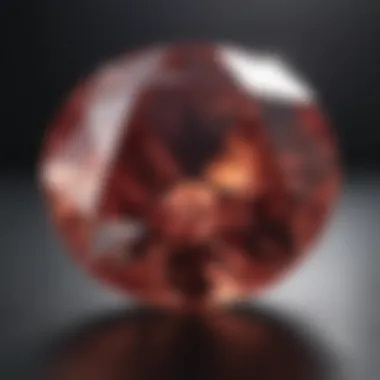
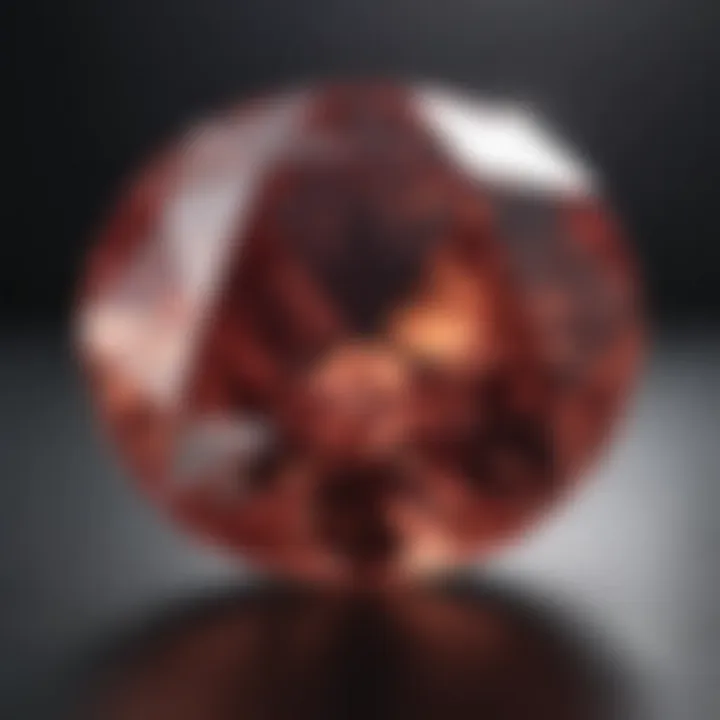
- Larger carat diamonds may appeal more to future buyers.
- Demand for specific sizes can fluctuate, impacting resale potential.
- Maintaining the diamond's certification can further aid in achieving a favorable resale outcome.
Understanding Size Perception
The perception of diamond size extends beyond mere measurement. It involves how we interpret and appreciate carat weight relative to visual impact. This section explores the dimensions of size perception, emphasizing its relevance in buying decisions and aesthetic appreciation of diamonds. Understanding size perception aids buyers in making more informed choices by understanding not just the numbers associated with carat weight but also how different factors influence the overall appearance of a diamond.
Visual Illusions and Carat Weight
When considering a diamond's carat size, it is important to recognize the role of optical illusions. A diamond can appear larger or smaller based on its cut, setting, and even the lighting in which it is viewed. For instance, a well-cut diamond can reflect light effectively, enhancing its brilliance, which may create an illusion of greater size compared to a poorly cut diamond of the same carat weight.
Among the types of cuts, the round brilliant cut is considered most popular for maximizing sparkle and visual size. Conversely, fancy shapes like marquise or oval can make a diamond appear larger due to their elongated outlines.
Another factor contributing to perceived size is the setting of the diamond. A narrow band or minimalist design can make the diamond appear more pronounced, emphasizing its size.
"The perceived size of a diamond is often more about how it interacts with light than the actual carat weight."
Comparison of Shapes and Dimensions
Different shapes of diamonds offer varied visual experiences. Each shape can impact how a diamond is perceived in terms of size and elegance. For example, a cushion-cut diamond, with its square shape, may appear smaller when compared to a round diamond of the same carat weight. This is due to differences in surface area and light reflection.
The dimensions of a diamond further influence its visual weight. For instance, a diamond with a greater depth may seem smaller because more weight is hidden beneath the surface. Conversely, a diamond that is cut shallower can spread its weight across a larger diameter, creating an illusion of greater size. Understanding these comparisons can empower consumers to select a diamond that aligns with their desired aesthetic.
Summary
In summary, understanding size perception when it comes to diamonds is crucial. Visual illusions, cut, and diamond shapes play a significant role in determining how one perceives a diamond’s size. This knowledge can guide both novice and seasoned buyers as they navigate choices in the diamond market.
Common Misconceptions
When it comes to diamonds, many misconceptions prevail among buyers, especially concerning carat size. It is vital to debunk these myths to make informed decisions when selecting a diamond. Understanding these misconceptions helps buyers align their preferences with reality, improving their overall purchasing experience. Each misconception has specific implications for value, appearance, and customer satisfaction.
Larger Isn’t Always Better
One of the most persistent beliefs is that a larger diamond always represents higher value and attractiveness. This assumption can lead to poor purchasing choices. While carat weight does play a significant role in a diamond's value, it is essential to consider the overall quality, including cut, color, and clarity. A well-cut smaller diamond can appear more brilliant and valuable than a larger stone that lacks proper cut quality. Customers frequently make the mistake of equating size with beauty, overlooking how cut can significantly influence a diamond's sparkle. Smaller diamonds can shine more brilliantly under light and offer an elegance that many larger stones lack.
"A diamond's true beauty lies not in its size but in its brilliance and craftsmanship."
Buyers should explore diamonds that meet their aesthetic preferences and budget rather than solely focusing on carat weight. Engaging with a knowledgeable jeweler can provide valuable insights into achieving the perfect balance between size and quality.
Understanding Carat vs. Size
Another common misunderstanding is the direct correlation between carat weight and physical size. Carat is a measure of weight, not dimensions. Two diamonds of the same carat weight can have significantly different appearances based on their cut and shape. For example, a 1.0-carat round diamond will look different than a 1.0-carat princess-cut diamond.
Additionally, factors such as depth and table size can directly affect how large a diamond appears when worn. A flatter diamond may look larger than a deeper one of the same carat weight. Therefore, the buyer's perception can be significantly affected by these variations, leading to confusion.
It is prudent to view diamonds in person and assess their size and style before making a purchase. An experienced jeweler can help clarify how different cuts and shapes impact the perceived size while guiding buyers on finding a diamond that resonates with their tastes.
In summary, understanding these misconceptions aids consumers in navigating the diamond market more effectively. By recognizing that larger diamonds are not always superior and differentiating between carat weight and actual size, buyers can make more educated choices.
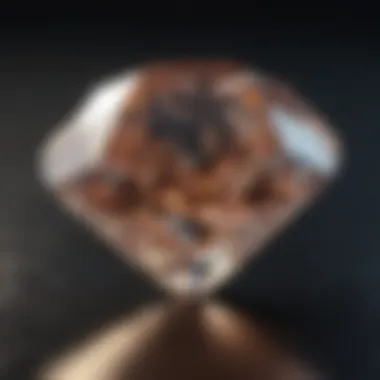
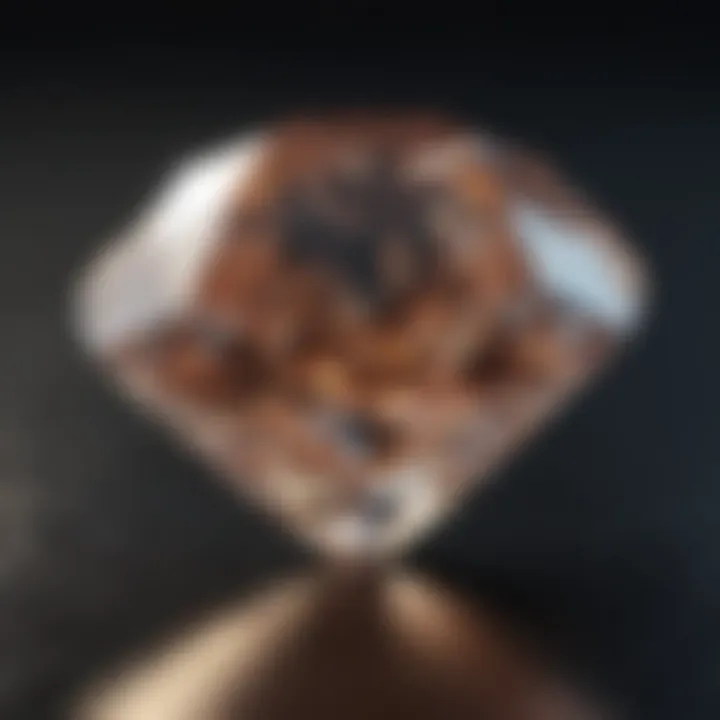
Factors Influencing Carat Size Choice
Understanding carat size is essential when considering a diamond purchase. Carat weight significantly impacts the overall appearance and value of a diamond. But beyond just the number on the scale, there are various factors that influence how one chooses a specific carat size. These factors can include personal preferences, budget limitations, and the intended use of the diamond jewelry.
Budget Considerations
One of the most crucial aspects influencing carat size is the budget. Diamonds are sold based on their carat weight, with larger stones tending to command higher prices. This pricing dynamic often raises the question of how much one is willing to invest. Buyers must weigh the importance of carat size against other qualities such as cut, color, and clarity.
When budgeting for a diamond, it can be helpful to establish a range. For instance, if the budget allows for a specific carat size, consider what compromises may be necessary in other qualities. Many jewelers can provide insight on how to find the best value for your investment, helping you to balance size with overall quality. With diamonds, size does matter, but so do other factors.
Personal Style and Preference
Diamonds come in various shapes and styles, which influence the choice of carat size. An individual's taste plays a pivotal role in this decision. Some people prefer the classic round cut, while others might be drawn to more unique shapes like oval or pear. Each shape interacts differently with light patterns, which can affect how size appears to the naked eye.
Moreover, preferences for setting styles also come into play. A larger diamond may look striking in a solitaire setting, while a smaller stone may be accentuated beautifully in a halo setting. Hence, it is vital to consider personal style and how the diamond will fit into one's existing collection or the intended aesthetic of the piece.
Occasion and Purpose
The occasion for which the diamond is purchased can significantly influence the choice of carat size. For example, an engagement ring might warrant a larger carat size due to its sentimental value and the desire to make a statement. Conversely, for everyday wear, a smaller carat might be more practical and comfortable.
Additionally, understanding the purpose of the piece can guide the decision. Jewelry meant for special occasions may prioritize carat size, while pieces intended for casual wear may focus on durability, ease of wear, or even matching existing jewelry.
"Choosing a diamond is not only about size; it’s also about its significance in your life."
Choosing a Diamond Based on Carat Size
Understanding how to choose a diamond based on carat size is crucial for both new and seasoned buyers. Carat weight does not just determine the price; it can also influence the overall appearance and engagement of the stone in jewelry. The goal here is to find a balance between aesthetics and budgetary constraints. In this section, some key elements about selecting a diamond by carat size will be discussed.
Selecting a diamond involves personal preference and knowledge about how carat weight aligns with the factors affecting the diamond's appearance. This process might require weighing different considerations such as budget, style, and the occasion for which the diamond is intended. Ultimately, understanding your motivations and preferences is vital for making a satisfactory choice.
Guidelines for First-Time Buyers
For first-time buyers, the journey of selecting a diamond can feel overwhelming. Here are some essential guidelines:
- Set a Budget: Determine how much you are willing to spend. Carat weight can significantly affect the price of a diamond. A good starting point is to identify a range that you are comfortable with.
- Research: Familiarize yourself with the basics of diamonds, including the Four Cs—carat, cut, clarity, and color. Understanding these elements helps you evaluate diamonds effectively.
- Prioritize: Decide what matters most to you. If size is key, you might be inclined to choose a slightly lower quality in cut or clarity to maximize carat weight within your budget.
- Seek Certification: Look for diamonds that come with a grading report from a recognized organization like the Gemological Institute of America (GIA). This ensures you are getting what you pay for.
- Visualize Size: Use tools or resources to visualize how different carat weights appear on the finger or in various settings. This will help align expectations with reality.
Consulting with Jewelers
Consulting with jewelers can provide valuable insights when choosing a diamond based on carat size. Here are some considerations when speaking with professionals:
- Ask Questions: Do not hesitate to inquire about the diamonds you are considering. Knowledgeable jewelers can provide insights about differences between similar diamonds and their overall appearance.
- Request Comparisons: Seeing multiple diamonds side-by-side can help in understanding how carat weight affects the overall look. Jewelers can help you compare size, shape, and setting options.
- Get Recommendations: Jewelers often have significant experience and can guide you in selecting the right diamond according to your specific needs and preferences. They can suggest options based on personal style or occasion.
- Consider Customization: If you have specific desires in mind, inquire about the possibility of customization. Some jewelers can offer tailored options to meet personal goals while still accommodating carat size preferences.
Choosing a diamond based on carat size is a critical step in finding the right piece of jewelry. By implementing the guidelines above and maintaining a dialogue with jewelers, buyers can make informed choices that resonate with their style and purpose.
Market Trends in Carat Sizes
Understanding market trends in carat sizes is crucial for anyone interested in diamonds. As the diamond industry evolves, various factors influence both consumer choices and pricing. It is essential to recognize these trends as they provide insights into what is popular, what holds value, and how preferences change over time.
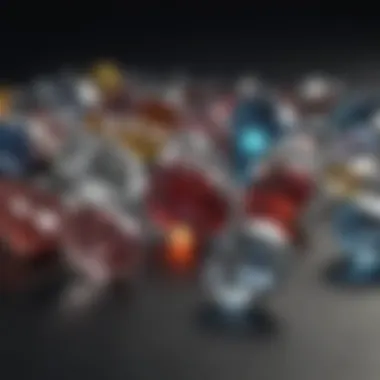
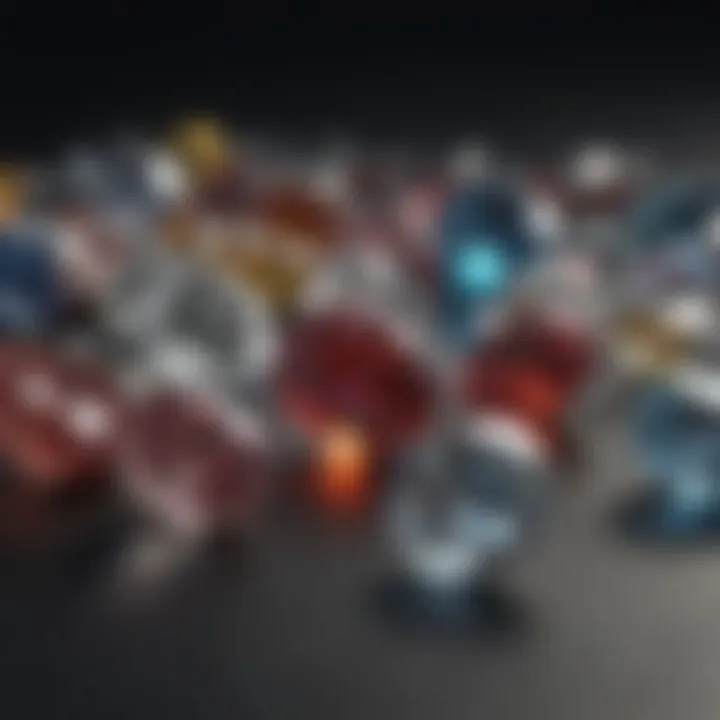
Current Pricing Trends
The price of diamonds is not static; it fluctuates based on several factors including carat size, quality, and market demand. Generally, larger diamonds command a higher price per carat. However, this does not mean that smaller stones lack value. In recent years, there have been shifts in how consumers perceive carat sizes.
For instance, while traditional preferences favored larger stones for engagement rings, there is a growing appreciation for unique designs and craftsmanship—sometimes at the cost of carat weight. Some buyers now prefer ethically sourced or lab-grown diamonds, which can impact market prices differently than natural diamonds.
As of 2023, the diamond market shows an inclination towards diamonds in the range of 0.5 to 1.0 carats. This segment has seen stable pricing due to consistent demand.
Emerging Preferences in the Market
Emerging preferences suggest a shift in the demographic of diamond buyers. Millennials and Gen Z are increasingly influencing market trends. These younger consumers often prioritize sustainability and ethical practices in their purchasing decisions.
Additionally, there is a noted interest in colors and shapes beyond the classic round cut. Fancy colored diamonds, princess cuts, and more intricate variations are becoming popular among buyers seeking individuality in their jewelry.
Key factors in emerging market preferences include:
- Sustainable Sourcing: Customers are more aware of where their diamonds come from and prefer brands that ensure ethical practices.
- Unique Styles: Interest in distinct styles drives demand for alternative shapes and colors.
- Personalization: Custom designs lead to a unique appeal that resonates with younger generations.
This trend towards personalization and sustainability indicates that the market might increasingly favor smaller but personalized diamonds over traditional larger stones. This changing landscape underscores the importance of understanding current market trends when selecting a diamond.
Future of Diamond Retail
The diamond retail landscape is undergoing significant transformation. The rise of technology and shifting consumer priorities are reshaping how diamonds are marketed, sold, and perceived. Understanding these changes is crucial for both buyers and industry stakeholders. The evolution reflects broader societal trends, such as sustainability and the demand for transparency, which are increasingly important factors influencing purchase decisions.
Changing Buying Behaviors
Consumer behavior is changing rapidly in the diamond market. With access to information at their fingertips, modern buyers are more informed than ever. They research extensively before making a purchase. This shift leads to several key behaviors:
- Informed Decision-Making: Shoppers now prioritize knowledge about the product. They want to understand carat weight, cut quality, and ethical implications before making any purchase.
- Value for Money: Many buyers evaluate diamonds through the lens of value. They often seek quality over quantity, emphasizing clarity and cut rather than carat weight alone.
- Online Shopping: The digital realm has become increasingly significant. E-commerce platforms are thriving, allowing consumers to compare prices and selections conveniently from home.
- Emotional Connection: There is a growing trend toward personalization. Buyers are looking for diamonds that carry personal meaning, leading to a preference for unique pieces rather than generic options.
Sustainability and Ethical Sourcing
As society becomes more environmentally conscious, ethical sourcing gains importance in diamond retail. Consumers are increasingly wary of where their purchases originate and the conditions under which they are sourced. Factors dictating this trend include:
- Awareness of Conflict Diamonds: There is a rising understanding of the ethical implications of diamond mining. This encompasses concerns around conflict diamonds and the environmental impact of mining practices.
- Demand for Transparency: Buyers prefer retailers who can provide traceability of their stones. Knowing the journey of a diamond—from mine to market—appeals to a conscientious consumer base.
- Support for Sustainable Practices: Many consumers wish to support brands committing to sustainability. This can include eco-friendly mining practices or initiatives that repair damage caused by diamond mining.
By prioritizing sustainability, consumers are reshaping the industry, compelling retailers to adapt their sourcing and marketing strategies to these values.
The future of diamond retail is not just about size but also about the integrity and story behind each piece. As these trends continue to develop, industry stakeholders must stay abreast of market changes and consumer expectations.
Epilogue
In reviewing the concept of diamond carat size, it becomes clear that this measurement plays a critical role in how we evaluate diamonds. The article's exploration into various facets of carat weight reveals not just its significance in defining size but also its impact on value and personal preferences. Individuals interested in purchasing diamonds should understand that carat size can influence perception and desirability.
Recap of Key Insights
- Importance of Carat Weight: Carat weight is directly linked to the worth of a diamond. Higher carat weights generally increase the price, but this connection is nuanced by other factors like clarity and cut quality.
- Perception vs. Reality: A diamond's size perceived by the naked eye may not reflect its carat weight. The cut and shape can create visual illusions, leading buyers to feel that a smaller carat diamond appears larger than its weight suggests.
- Common Misconceptions: Misunderstandings about carat size, such as the belief that bigger is always better, can lead to poor purchasing decisions. Education on carat versus size ensures buyers make more informed choices.
Final Thoughts on Carat Size Selection
Choosing a diamond based on carat size involves more than just selecting the largest available option. Buyers should consider their budget, how a diamond fits into their personal style, and the occasion for which it is intended. While carat weight is important, factors such as brilliance, fire, and overall aesthetic often carry equal or greater weight in the selection process. Additionally, understanding market trends in carat sizes can provide valuable context for making wise investments.
Ultimately, this article serves as a guide to navigate the complexities of carat size. Buyer confidence increases when equipped with the right knowledge, leading to more satisfying and personal experiences in diamond purchasing.







